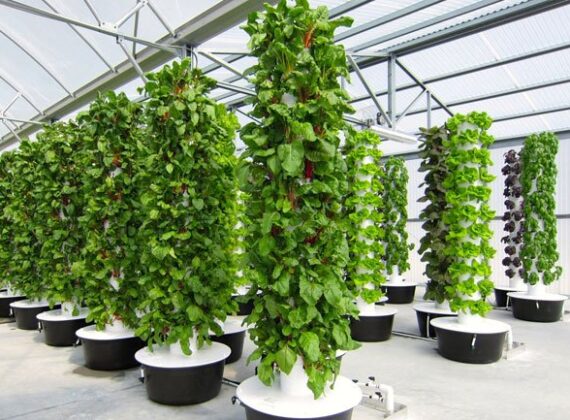Hydroponic Systems
Nutrient Film Technique (NFT)
With NFT hydroponic systems, the nutrient solution is pumped into channels that can hold a varied amount of plants. The channels are slightly sloped, so the nutrient solution flows through the channel, over the plant’s roots dangling roots, and back into the hydroponic reservoir. NFT hydroponic systems don’t often use grow medium and foam net pot inserts are typically used to secure the plant.
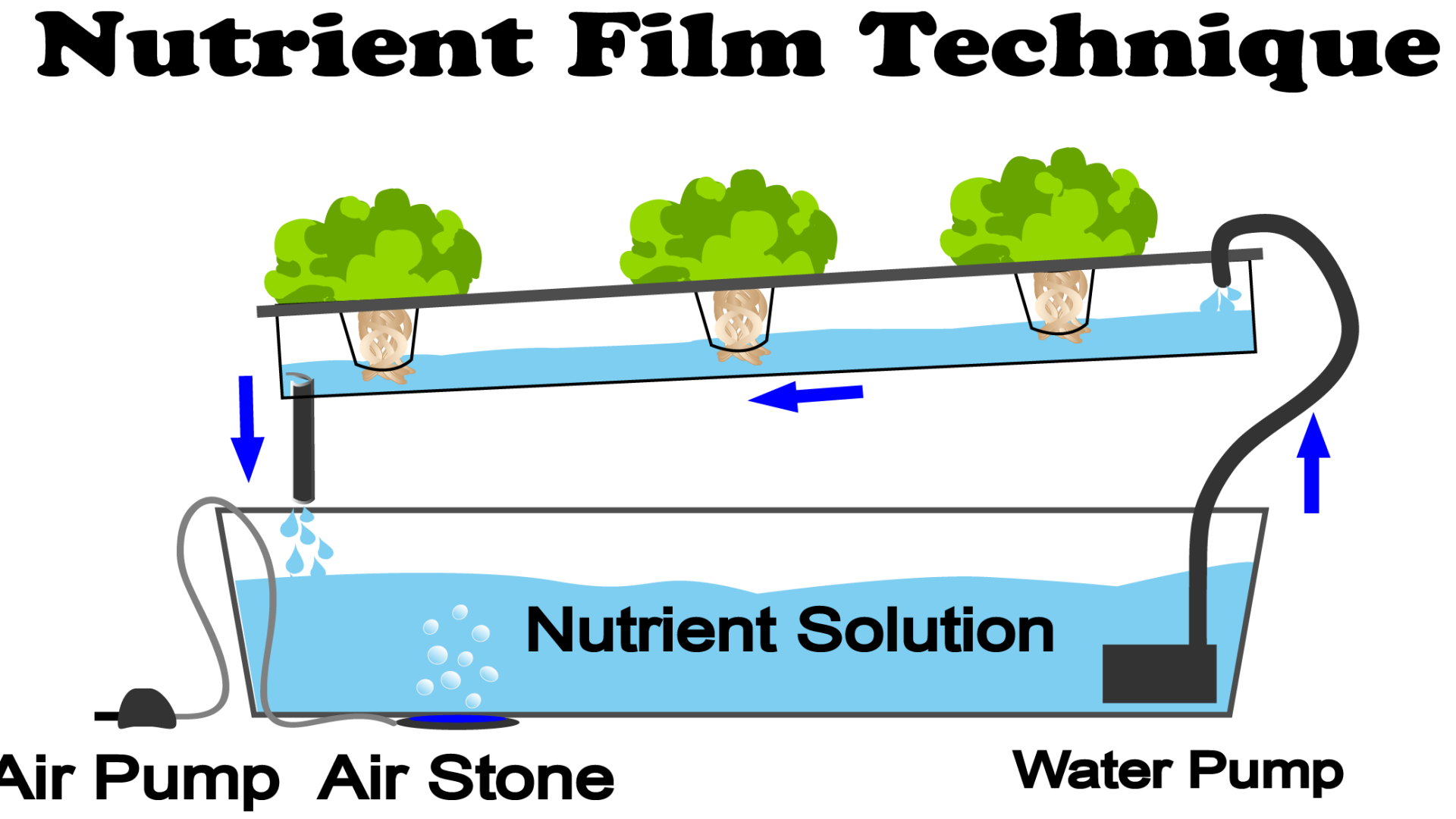
Deep Water Culture (DWC)
With DWC hydroponic systems, the plant’s roots are suspended in the nutrient solution and the air is provided directly to the roots with an air stone or diffuser. Plants are placed in net pots with grow medium to help secure them. Because the plants are sitting in nutrients and being supplied with unlimited oxygen, they grow like crazy. Deep water culture works great for almost all plants but works especially well for large plants with big root systems or ones that grow an abundance of fruit. You’ll be amazed at how big the root system gets and how quickly it happens!
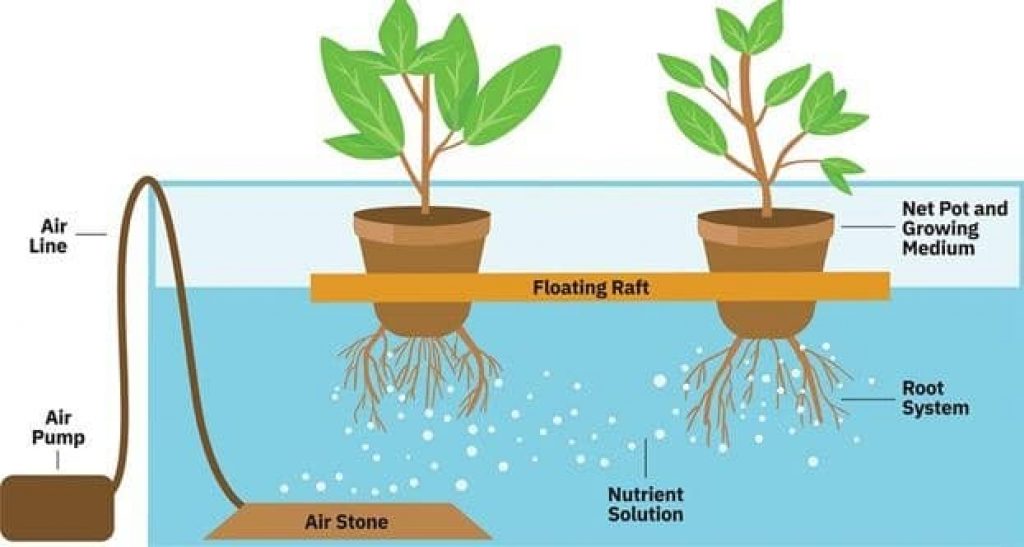
Wick Hydroponics
The wick system is the most simplistic type of hydroponic system requiring no electricity, pumps, or aerators. Among the different types of hydroponic systems, it’s the only one that can be a completely passive system, meaning no electricity is needed. In most systems, plants are placed in an absorbent grow medium like coco coir, vermiculite, or perlite, with a nylon “wick” running from the plants into a reservoir of nutrient solution.
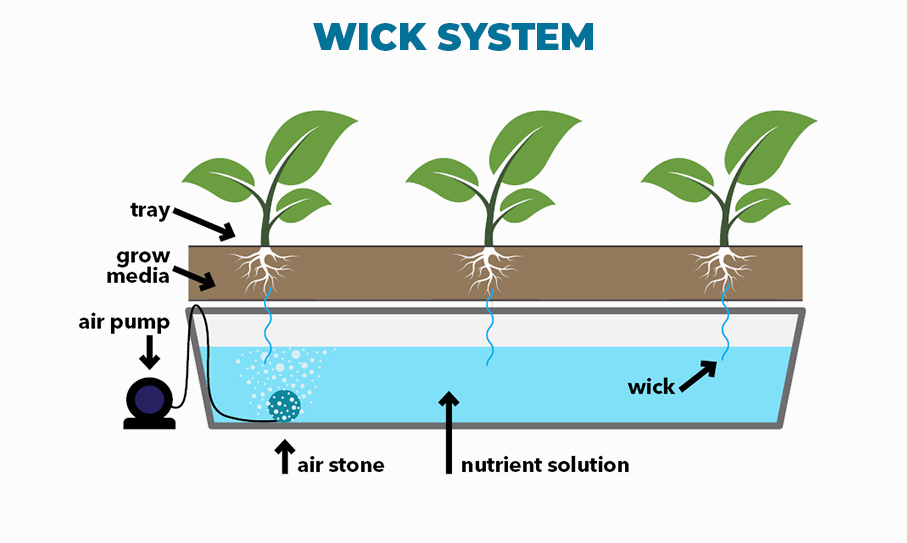
Ebb & Flow/Flood & Drain System
Ebb and flow hydroponic systems (also called flood and drain), are popular with many home hydroponic gardeners. In ebb and flow systems, plants are placed in large grow beds filled with grow medium. The grow bed is flooded with nutrient solution until it reaches a certain point. A drain allows the water to only get a few inches below the top of the grow medium, so it doesn’t overflow. The power to the water pump is controlled by a timer. After running for a predetermined amount of time, the timer shuts off the pump which allows the water to run back down through the pump, draining the grow bed completely.
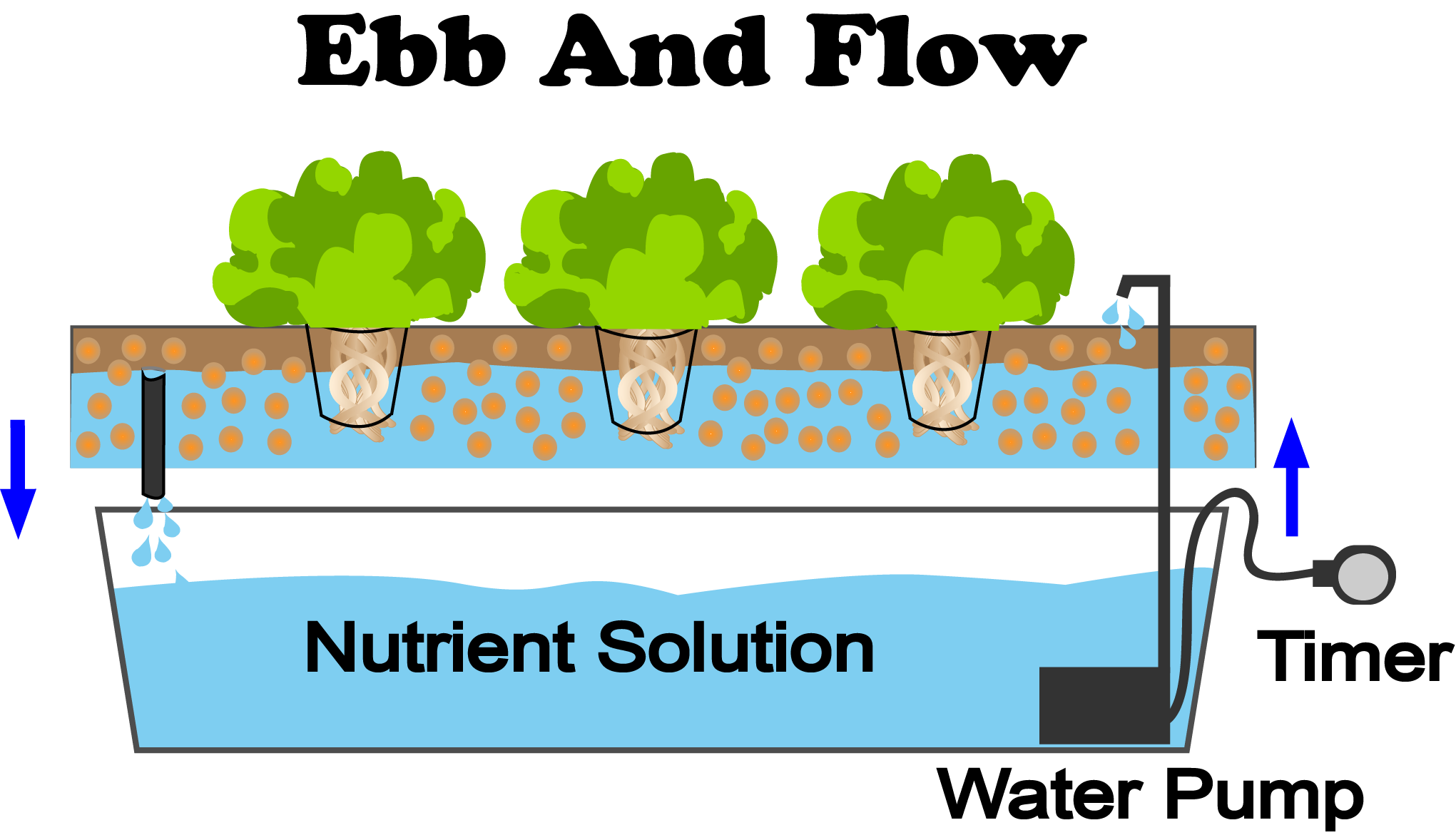
Drip Hydroponics
Drip hydroponic systems are easy to use, set up, and can be tailored in several ways making them ideal for those who are commonly making changes. With these systems, the nutrient solution is pumped through tubes directly to the base of the plant. At the end of the tubes are drip emitters that allow the nutrient solution to drip at an adjustable flow, saturating the grow medium. Drip hydroponic systems can be non-circulating or circulating systems. Non-circulating systems drip slowly to provide the plant with enough nutrients at a consistent rate. Circulating systems drip more often, with excess nutrients flowing back into the reservoir as in the image below.
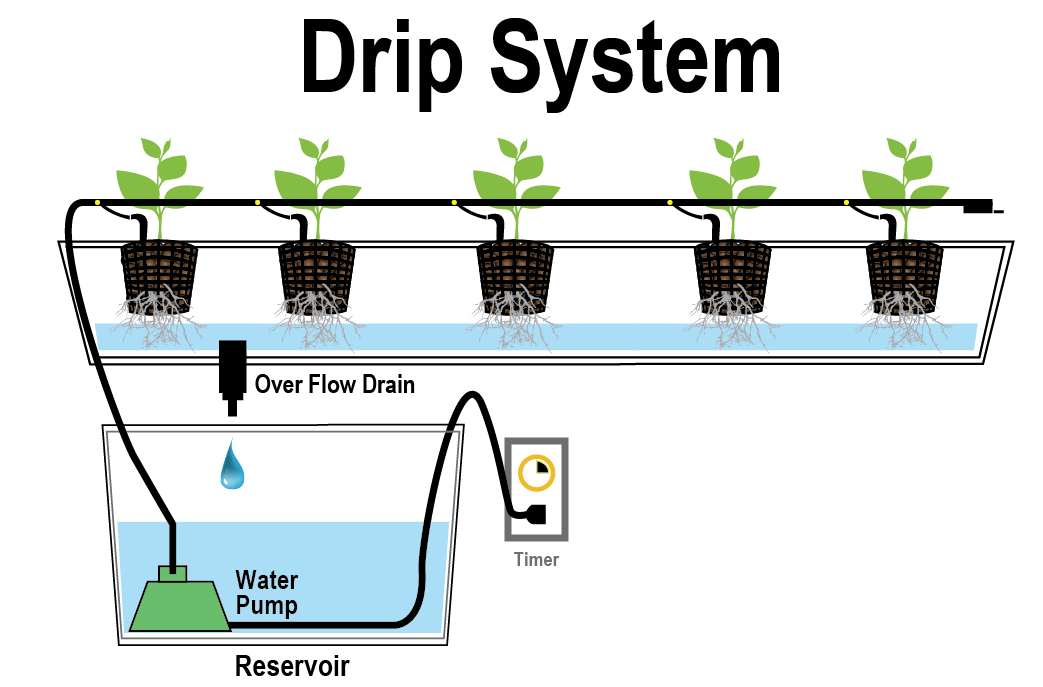
Aeroponics
Aeroponics isn’t the easiest method of hydroponic gardening, but it’s a simple concept. Plants are suspended in the air and nutrient solution is sprayed over the plant’s root system. The nutrient solution is pumped into piping that’s fitted with mist nozzles. As the pressure builds the misters spray the plant’s roots and the solution falls back into the reservoir. You could have a system that looks similar to the one below which looks similar to a DWC tote hydroponic system, but instead of an air stone in the reservoir, you have a water pump. The smaller the solution particle size, the faster the absorption by the plant’s roots
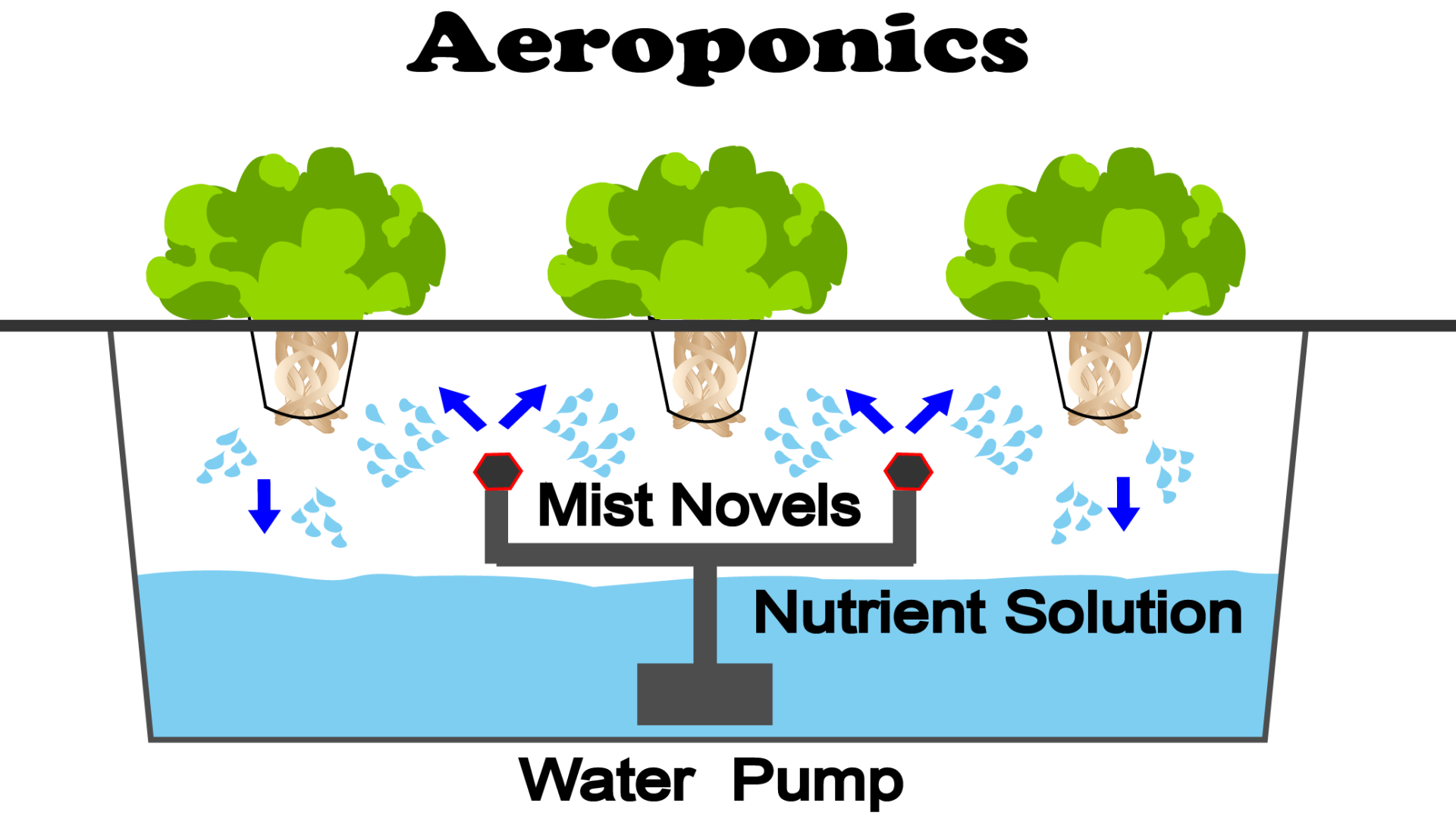
The Kratky Method
The kratky method of hydroponics is the only passive hydroponic method. Since kratky hydroponic systems don’t require any water or air pumps, no electricity is needed for them to run. Kratky hydroponic systems are simple. The plant’s roots dangle in a reservoir filled with hydroponic nutrient solution. There is an air gap left between the top of the water and the bottom of the plant to allow a section of the roots to breathe. Without the air gap, the plant will drown.
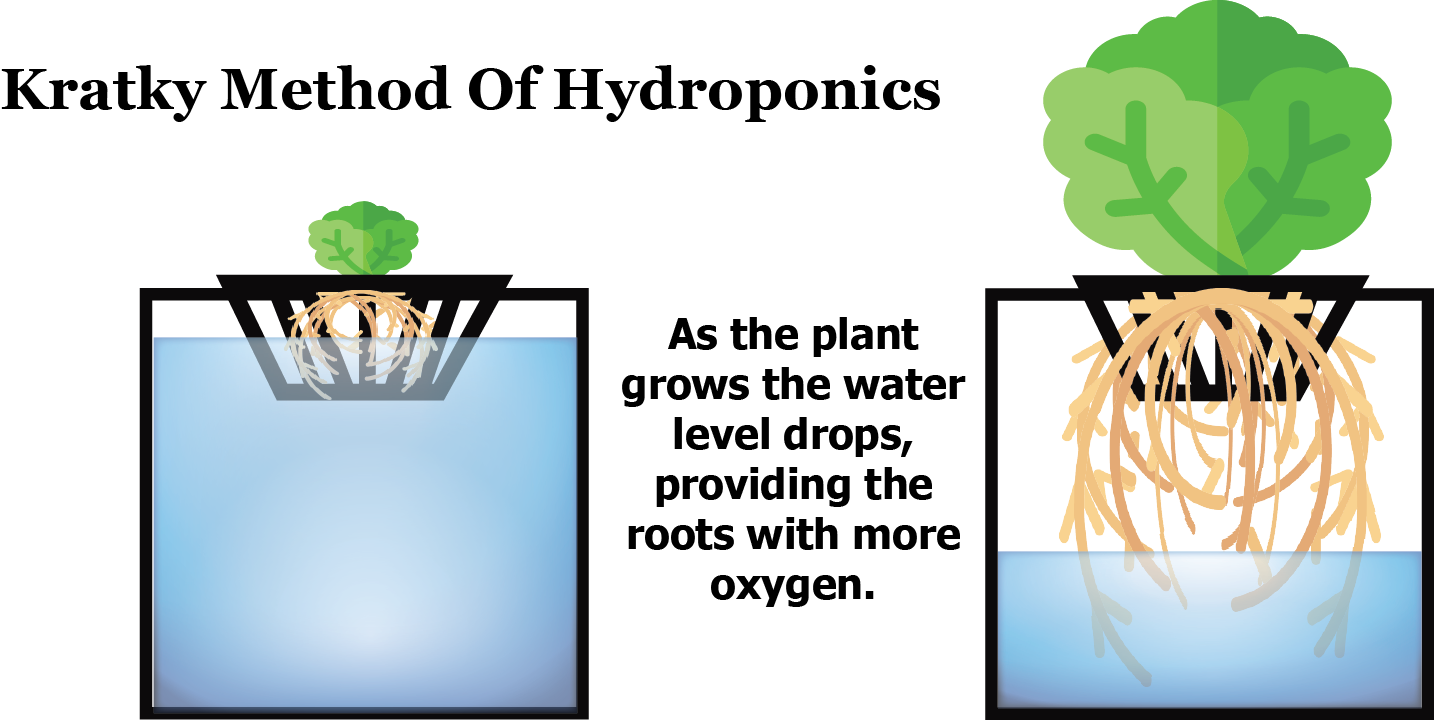
Drip Hydroponics
Drip hydroponic systems are easy to use, set up, and can be tailored in several ways making them ideal for those who are commonly making changes. With these systems, the nutrient solution is pumped through tubes directly to the base of the plant. At the end of the tubes are drip emitters that allow the nutrient solution to drip at an adjustable flow, saturating the grow medium. Drip hydroponic systems can be non-circulating or circulating systems. Non-circulating systems drip slowly to provide the plant with enough nutrients at a consistent rate. Circulating systems drip more often, with excess nutrients flowing back into the reservoir as in the image below.
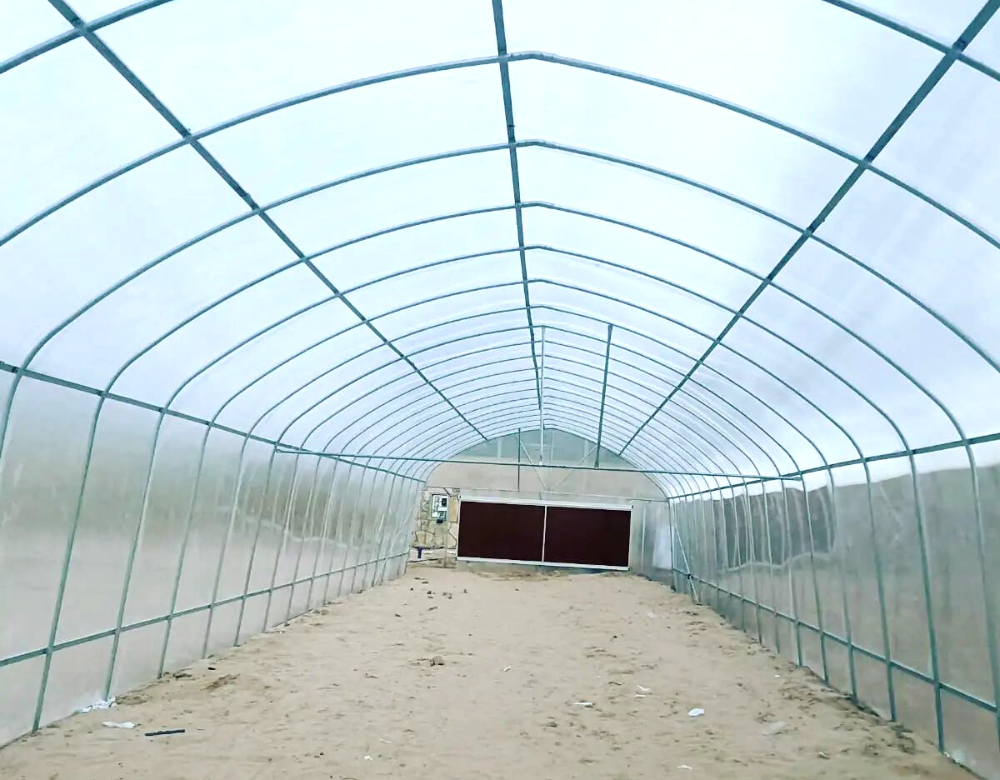
Send Your Inquiry
Get a Free Quote
Latest News From Blog
Vertical Farming
We are a boutique digital transformation consultancy and software development Fusce consectetur erat id enim
Green House
We are a boutique digital transformation consultancy and software development Fusce consectetur erat id enim
Hydroponic !!!
We are a boutique digital transformation consultancy and software development Fusce consectetur erat id enim





